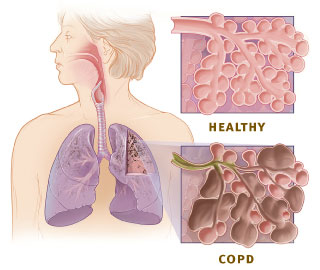Appendicitis is both very easy and very difficult to diagnose. That may result in undue delay in starting the correct treatment or may result in removal of innocent appendix, while the real disease remains illusive. Diagnosis of appendicitis is mostly clinical as no test or imaging can conclusively prove appendicitis pre-operatively.
I want to mention some symptoms and signs those are strongly suggestive of acute appendicitis. I use the word suggestive, because the examining doctor is the person how he perceives and interprets the clinical features; even best of the doctors may get misled at any point of time.
| Acute Appendicitis An exemplary case of acute appendicitis in a 10-year-old boy. The organ is enlarged and sausage-like (botuliform). This longitudinal section shows red inflamed mucosa with an irregular luminal surface. Diagnosed and removed early in the course of the disease, this appendix does not show late complications, like transmural necrosis, perforation, and abscess formation. (Photo credit: Wikipedia) |
I want to mention some symptoms and signs those are strongly suggestive of acute appendicitis. I use the word suggestive, because the examining doctor is the person how he perceives and interprets the clinical features; even best of the doctors may get misled at any point of time.
- Pain, Vomiting and Fever; in that order, of course in a little late case, may be more than six hours. This is called as Murphy's Triad.
- History of getting pain in the right side of lower abdomen (Right Iliac Fossa, RIF) while crossing the speed bumps on the road or coughing.
- A pain that makes the person standing in a hip flexed position and patient wants to remain still. Pain that starts from the upper abdomen and localises to right lower abdomen after a while, may be within a few hours.
- Pain on palpation (Tenderness) on a point called Mcburney's point that sits two thirds from the umbilicus and one third from the anterior superior iliac spine on a line that joins umbilicus to the top of iliac bone (anterior superior iliac spine).
| Location of McBurney's point illustrated on the abdomen of a male subject. (Photo credit: Wikipedia) |
- Getting pain after suddenly lifting off the pressed hand (Rebound Tenderness) from the above point.
- Disagreeable pain with some abnormal increase in sensitivity of pain (Hyperaesthesia) when examiner gentle moves his palm on the right lower abdomen (Sherren's Triangle).
- Rovsing's Sign, pain felt in RIF on deep palpation of the left lower abdomen (Left Iliac Fossa)
- Guarding or feeling of resistance to the palpating hand from the muscles of right iliac fossa.
- Internal pain in the right side (RIF) on digital rectal examination of rectum.
- Pain that passes from loin to groin; suggestive of stone in urinary tract.
- Pain that makes the patient to roll about, can not remain still is again suggestive of calculus in urinary tract or spasmodic pain of intestinal origin.
- Absence of pain on coughing or while jumping over the speed bumps on road.
- Absence of tenderness in presence of complains for pain.
...
Click here to Subscribe news feed from "Clinicianonnet; so that you do not miss out anything that can be valuable to you !!
...







